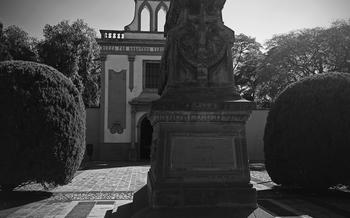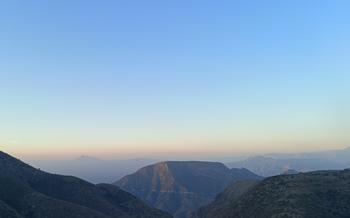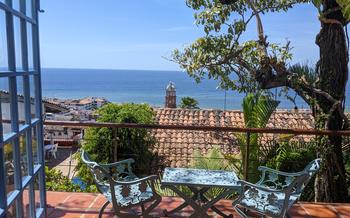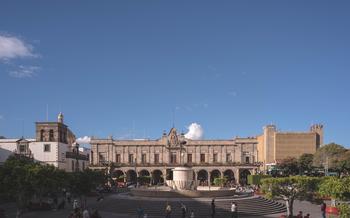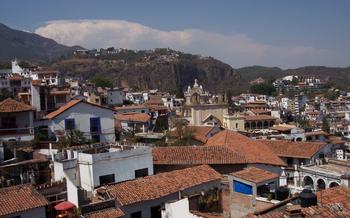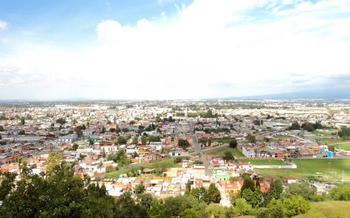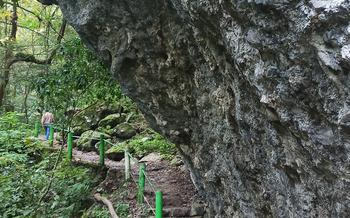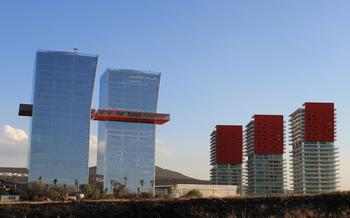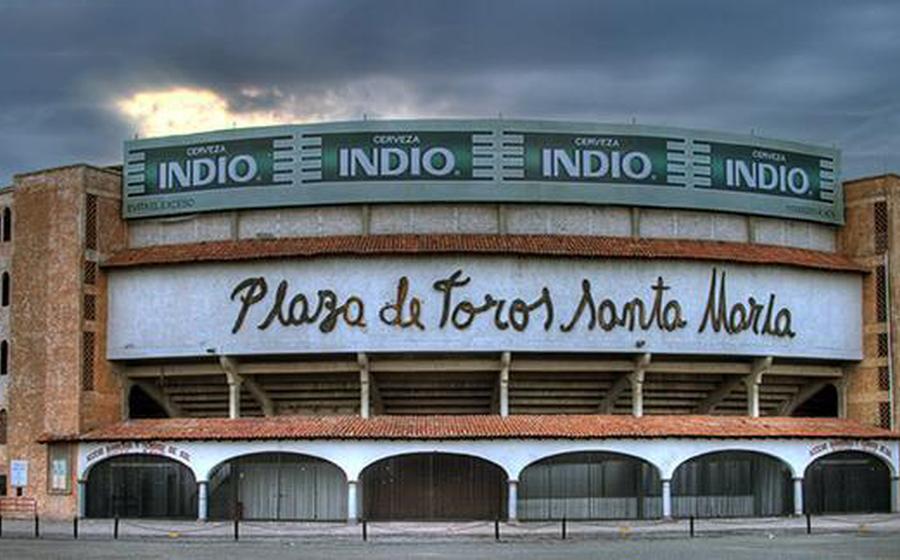
Santa Maria Bullring
- Historical Significance
- Bulls and Breeds
- Safety and Controversies
- Tickets and Seating
- Dress Code and Etiquette
- Food and Drinks
- Accommodations and Hotels
- Transportation and Parking
- Guided Tours and Experiences
- Museums and Exhibitions
- Shopping and Souvenirs
- Photography and Videography
Historical Significance
Bullfighting holds a deep historical significance in Mexico, dating back to its introduction by Spanish conquistadors during the 16th century. It quickly gained popularity among the local population, becoming an integral part of Mexican culture and tradition. Queretaro's Santa Maria Bullring, inaugurated in 1919, stands as a testament to this rich heritage. This impressive venue showcases a unique architectural style, blending elements of Spanish colonial and Moorish design. Its elegant facade, adorned with intricate details and horseshoe-shaped arches, reflects the grandeur and importance of bullfighting in Queretaro. The bullring's spacious interior, with its tiered seating and central arena, provides an immersive and authentic atmosphere for spectators to witness the spectacle of bullfights.
Bulls and Breeds
Bullfighting in Mexico showcases the bravery and skills of the matadors as they face some of the finest fighting bulls in the world. These bulls are specially bred for their strength, agility, and aggression, ensuring an intense and thrilling spectacle for the audience.
The most commonly used breed for bullfighting in Mexico is the Lidia, a descendant of the Spanish fighting bull. These bulls are renowned for their muscular build, sharp horns, and aggressive temperament. They are carefully selected for their genetic traits, with breeders focusing on qualities such as bravery, endurance, and the ability to charge repeatedly.
The selection process begins at a young age, with calves being observed for their behavior and physical characteristics. Those that display the desired traits are then trained and prepared for the bullring. The training involves exposing the bulls to various stimuli, such as loud noises, waving flags, and the presence of humans, to desensitize them and make them more responsive to the matador's movements.
The qualities of a fighting bull are highly valued in the world of bullfighting. Their strength allows them to withstand the matador's attacks, while their agility enables them to make quick movements and avoid the matador's passes. Their aggression, coupled with their sharp horns, makes them formidable opponents, adding to the danger and excitement of the corrida.
Safety and Controversies
Bullfighting is an inherently dangerous sport, and safety measures are paramount to ensure the well-being of both bullfighters and spectators. The bullring is equipped with protective barriers, medical facilities, and trained personnel to respond to any emergencies. However, the risks associated with the sport have sparked significant debate and controversy.
Animal rights activists have raised concerns about the treatment of bulls in bullfights. The practice of killing the bull at the end of the performance has been criticized as cruel and unnecessary. Protests and demonstrations against bullfighting are common, with activists calling for an end to the tradition.
Ethical considerations surrounding bullfighting have led to discussions about the balance between cultural heritage and animal welfare. Supporters of bullfighting argue that it is an integral part of Mexican culture and tradition, deeply rooted in history and passed down through generations. They emphasize the skills and artistry of the matadors and the bravery displayed in the ring.
The debate over bullfighting continues, with strong arguments on both sides. It is important to respect the diverse perspectives and engage in thoughtful discussions about the ethical implications of this controversial tradition.
Tickets and Seating
Attending a bullfight in Queretaro is a unique and memorable experience, and securing the best seats is essential for making the most of it. Ticket prices vary depending on the category and location of the seats, with higher-priced options offering closer views of the action.
The front rows, known as barrera, provide an immersive and thrilling experience, allowing spectators to witness the bullfight up close and personal. These seats are highly sought after and offer an unparalleled perspective of the matador's intricate footwork and the bull's powerful charges.
Slightly further back, the tendido section offers a more elevated view, providing a panoramic perspective of the bullring. These seats are a good option for those who prefer a broader view of the action and a more comfortable seating arrangement.
In the upper tiers, the tendidos altos offer a budget-friendly option with a bird's-eye view of the entire bullring. These seats provide a good overall perspective of the bullfight and are suitable for those who prefer a less intense experience.
It is recommended to book tickets in advance, especially for major bullfighting events, to secure the best seats and avoid disappointment. Online booking platforms and local ticket offices typically offer a variety of options to suit different budgets and preferences.
Dress Code and Etiquette
Attending a bullfight in Queretaro's Santa Maria Bullring is not just about witnessing a spectacle; it's also about embracing the cultural traditions and customs associated with this iconic event. Dressing appropriately and adhering to the expected etiquette shows respect for the sport, the performers, and the local culture.
For men, a formal or smart casual attire is recommended. A suit or a pair of dress pants with a button-down shirt and tie is a classic choice. Blazers, sports coats, and dress shoes complete the look. Avoid wearing shorts, t-shirts, or sandals, as they are considered too casual for the occasion.
Women have more flexibility in their attire, but elegance and sophistication are still the key. A dress, skirt, or pantsuit are all appropriate options. Heels or dressy flats are suitable footwear. Avoid revealing or excessively casual clothing.
Beyond the dress code, there are certain etiquette norms to follow during the event. Applause is usually reserved for exceptional performances by the matadors or particularly brave bulls. Avoid talking or making loud noises during the fight, as it can be distracting to the participants and disrespectful to the tradition.
When the bull is killed, it is customary to show respect by removing your hat and holding it over your heart. This gesture signifies admiration for the bull's bravery and the matador's skill.
Remember, attending a bullfight is not just about watching a show; it's about immersing yourself in the local culture and traditions. Dressing appropriately and behaving respectfully shows your appreciation for the event and the people involved.
Food and Drinks
A visit to the Santa Maria Bullring is not complete without indulging in the local delicacies and beverages. Inside the bullring, you'll find a variety of food vendors offering a range of snacks and meals to keep you energized during the event. From traditional Mexican street food like tacos, tortas, and quesadillas to more substantial options like grilled meats and stews, there's something to satisfy every palate.
When it comes to drinks, you can choose from a variety of refreshing options, including beer, water, and soft drinks. For a truly Mexican experience, try a Michelada, a classic cocktail made with beer, lime juice, and spices. And if you're looking for something stronger, there's a selection of tequila and mezcal available as well.
If you prefer to dine in a more leisurely setting, there are several restaurants and cafes located near the bullring. These establishments offer a wider variety of dishes, including international cuisine and vegetarian options. Be sure to try some of the local specialties, such as enchiladas queretanas, a traditional dish made with corn tortillas filled with cheese and topped with a spicy red sauce.
No matter what your preferences, you're sure to find something to your liking at the Santa Maria Bullring. So come hungry and thirsty, and enjoy the culinary delights that Queretaro has to offer.
Accommodations and Hotels
A variety of hotels are located near the Santa Maria Bullring, catering to visitors and tourists. The Hotel Quinta Jurica is a luxurious option that offers stunning views of the venue and provides easy access to the city's main attractions. For a more affordable choice, consider the Hotel del Parque, which offers comfortable accommodations and is within walking distance of the bullring. If you're looking for a unique experience, the Hacienda Jurica is a restored colonial hacienda that offers a glimpse into Mexico's rich history and culture.
When choosing a hotel, consider your budget, preferred amenities, and proximity to the bullring. Many hotels offer special rates and packages for guests attending bullfights, so be sure to inquire about these when making your reservation. To secure the best deals and avoid disappointment, it's advisable to book your accommodation in advance, especially during the bullfighting season.
Transportation and Parking
Reaching the Santa Maria Bullring is a breeze, thanks to the well-connected public transportation system in Queretaro. Several bus routes stop near the bullring, making it easily accessible from different parts of the city. For those who prefer the convenience of a private vehicle, ample parking is available in the vicinity of the venue. However, it's advisable to arrive early to secure a spot, especially during major events or on weekends. To avoid the hassle of traffic and congestion, consider using public transportation or carpooling with friends. This will allow you to relax and soak in the atmosphere of the city as you make your way to the bullring.
Guided Tours and Experiences
Enrich your visit to the Santa Maria Bullring by opting for a guided tour that delves deeper into its history and traditions. These tours provide a unique opportunity to explore the bullring's various areas, including the stables, the bullpens, and the matador's dressing room, granting you an exclusive glimpse into the world of bullfighting. Knowledgeable guides will regale you with captivating stories and anecdotes, shedding light on the significance of the bullring and the rituals that take place within its walls.
For an even more immersive experience, consider booking a behind-the-scenes tour, which offers an unparalleled chance to interact with bullfighters and gain insights into their training and preparation. You may even have the opportunity to witness a practice session or a rehearsal, providing a rare glimpse into the dedication and skill required in this captivating art form. Whether you're a seasoned aficionado or a curious newcomer, these guided tours and experiences will leave you with a profound appreciation for the rich legacy and cultural significance of bullfighting in Queretaro.
Museums and Exhibitions
Dive into the rich history and culture of bullfighting at the fascinating museums and exhibitions dedicated to this unique tradition. Explore the Museo Taurino de Queretaro, where you'll find an extensive collection of bullfighting artifacts, memorabilia, and historical documents that provide a glimpse into the evolution of this controversial sport. Learn about the lives and careers of legendary matadors, admire intricate bullfighting costumes, and gain insights into the techniques and strategies used in the ring. Don't miss the interactive exhibits that allow you to experience the thrill of bullfighting firsthand, simulating the movements and techniques of a matador. These museums offer a unique opportunity to delve deeper into the world of bullfighting, appreciate its cultural significance, and understand the passion that surrounds this controversial tradition.
Shopping and Souvenirs
For a lasting memento of your bullfighting experience in Queretaro, visit the charming souvenir shops nestled near the Santa Maria Bullring. These shops are a treasure trove of bullfighting-themed merchandise, where you can find everything from miniature bullfighting figurines and posters to authentic matador costumes and accessories.
If you're looking for something truly unique, explore the local crafts and artisanal products on display. These handcrafted items, made by skilled artisans using traditional techniques, showcase the rich cultural heritage of Queretaro. From intricate pottery and colorful textiles to hand-painted ceramics and delicate jewelry, there's something for every taste and budget.
When shopping for souvenirs, be sure to support local vendors and artisans. Not only will you find one-of-a-kind items, but you'll also contribute to the preservation of traditional crafts and support the local economy.
Insider Tip: For an unforgettable souvenir, commission a custom-made bullfighting painting or sculpture from a local artist. These unique pieces of art will serve as a cherished reminder of your time in Queretaro.
Photography and Videography
Capturing the essence of a bullfight through the lens of a camera or the screen of a video recorder can be an exhilarating experience. Here are some guidelines and tips to help you make the most of your photographic and videographic endeavors at the Santa Maria Bullring:
-
Respect the Privacy of Bullfighters and Spectators: Always be mindful of the privacy of the bullfighters and spectators during the event. Refrain from taking close-up shots or recording conversations without their consent.
-
Capture the Best Shots and Angles: To capture the best shots, position yourself strategically. Opt for seats closer to the ring for a more immersive perspective. For wide-angle shots, try capturing the entire bullring with the crowd and the bullfighter in the frame.
-
Follow the Action: Bullfighting is a dynamic and fast-paced event. Keep your camera or video recorder focused on the action, capturing the matador's movements, the bull's charges, and the crowd's reactions.
-
Use Natural Light: The natural light during a bullfight can be harsh, but it can also create stunning effects. Utilize the golden hour, just before sunset, to capture warm and vibrant colors.
-
Edit Wisely: After capturing your footage, take the time to edit it carefully. Create a narrative that flows smoothly, highlighting the key moments of the bullfight.
